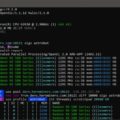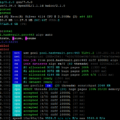

Some time ago, the CryptoNight algorithm used by cryptocurrencies such as Electroneum (ETN), Monero (XMR), Sumokoin (SUMO), Karbowanec (KRB), and possibly some others, was quite profitable to be mined by AMD GPUs. This is normal because AMD GPUs perform better than Nvidia when it comes to the CryptoNight algorithm, especially the latest AMD Radeon RX Vega GPUs that actually work in this algorithm. Despite the fact that the latest AMD GPUs are still not completely free from problems in terms of software support and can cause you some inconvenience by forcing them to work on mining, when they really work well in terms of CryptoNight performance.
Guide for CryptoNight Mining AMD Radeon RX Vega
We have prepared a short and easy-to-use guide that will help you get started and save you the trouble of mining CryptoNight with Vega GPUs.
- Start by downloading and installing the beta Radeon Software Crimson ReLive Edition для Blockchain Compute, since this driver probably still provides the best performance for mining CryptoNight on VEGA.
- Download from GitHub AMD Driver Blockchain ()
- Download from www.amd.com (
- When you install the driver, you need to go through Radeon Settings / Gaming / Global Settings and disable:
- HBCC memory segment;
- if you have Crossfire enabled for a pair of GPUs, then disable it.
- Reboot the system and make sure HBCC and Crossfire are disabled on all graphics cards before continuing.
- Each time the system starts, you need to turn off and on again all the GPUs in your system to achieve maximum mining performance, you can do it manually through the device manager, although there is an automatic way to do this, so that mining can start automatically every time loading. To do this, you need to download the appropriate version of Devcon for Windows that you are using, here is an easy way to get the required version
- Here’s how to turn off all AMD RX Vega GPUs and then turn them back on using the tool DevCon.exe:
devcon.exe disable "PCIVEN_1002&DEV_687F"devcon.exe enable "PCIVEN_1002&DEV_687F"
- The next step is to overclock / overclock the GPUs so that you can get the optimal combination of performance and power consumption, everything here may differ depending on the settings that you can use from card to card. You can use the built-in AMD Radeon Wattman tool, but it is not very convenient, therefore, using (can greatly simplify the process of testing GPU settings and memory clocks).
- Some people set the final GPU frequency / voltage settings in the registry after completing the test that works best so that they automatically load at boot time. However, we prefer to use the OverdriveNTool profile function, load and apply settings from the profile before starting the miner. Here is an example of how you can load a profile saved as “XMR” for 6 GPUs using OverdriveNTool, so you can easily have different profiles for different algorithms:
OverdriveNTool.exe -p0 "XMR" -p1 "XMR" -p2 "XMR" -p3 "XMR" -p4 "XMR" -p5 "XMR"
- Now you can use the CryptoNight software, there are many, but not all of them provide the best performance on AMD Radeon RX Vega GPUs. At the moment, two options are selected for better performance:
- ()
- ()
If you use XMR-stak, just make sure that the miner is configured with two threads on one GPU, this will require more virtual memory. Both miners need a lot of virtual memory, so make sure you have something like 48-64 GB to be safe and without problems.
Following the tips above, you can get 1800-2000 H / s for mining CryptoNight on one AMD Radeon RX Vega GPU, depending on your GPU and memory settings, so the performance will be good enough if you can keep the video cards cool enough . If you use the XMR-stak miner, you can also mine some coins using CryptoNight-light, for example, AEON, the settings are the same, this algorithm approximately doubles the normal CryptoNight hash.










No Comments